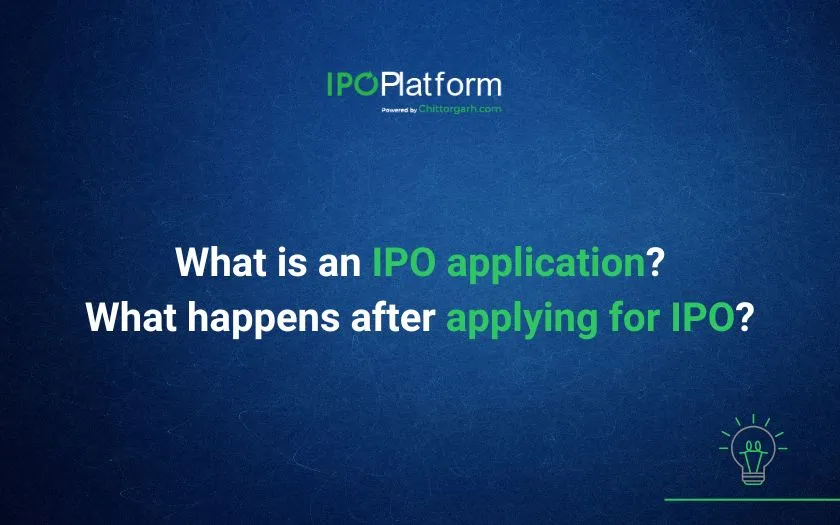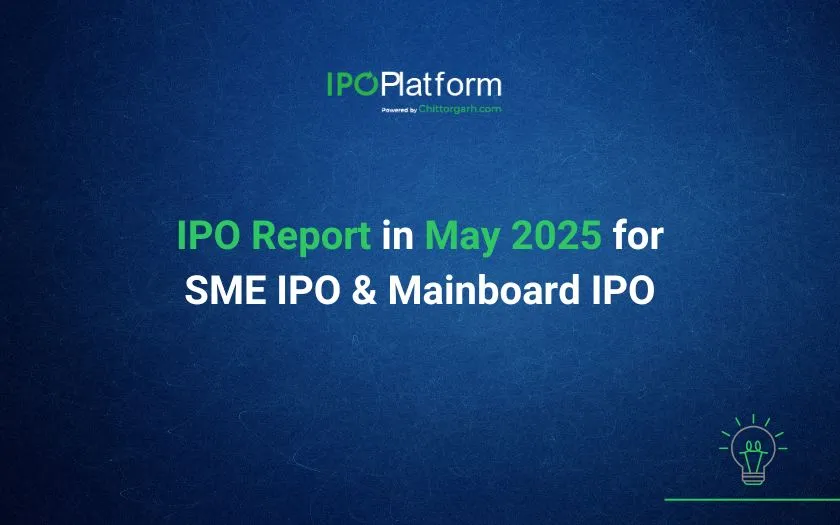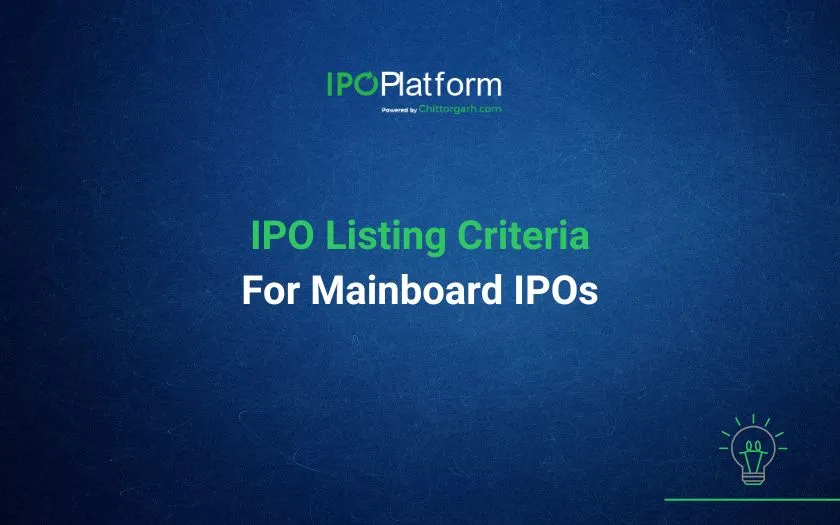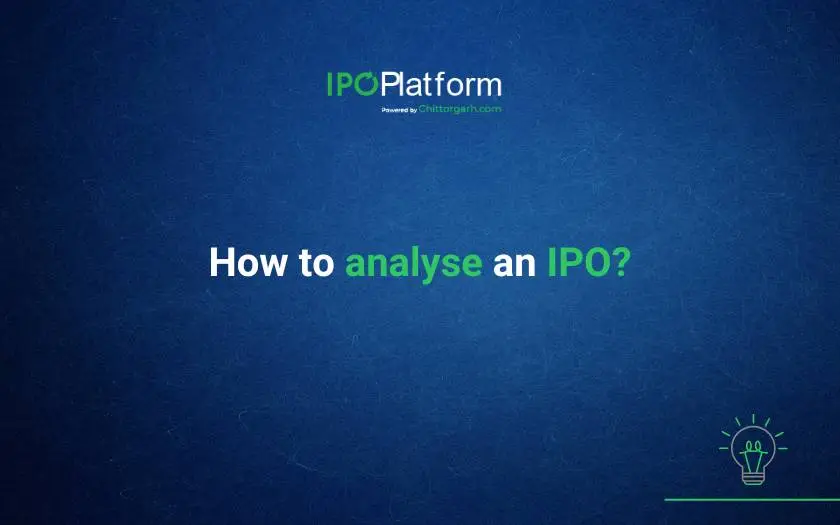What is an IPO application? What happens after applying for IPO?

IPO application is the first and most crucial step for investors looking to participate in a company’s public offering. Whether you’re a retail investor or an HNI, understanding the process of bidding, timelines, and categories is essential for a successful application. From UPI mandates to ASBA forms, and from pre-apply windows to cut-off times, each detail plays a key role in ensuring your IPO bid is valid and considered for allotment.
What is the meaning of IPO Application?
IPO Application is a process to place bids to buy shares of a company during IPO period i.e. the IPO open date and IPO close date. Applying for IPO is often called the IPO bidding process.
IPO Application can be submitted through online facilities offered by banks (net banking using ASBA facility, mobile banking apps) and through stock broker apps like Zerodha, 5 paisa, Angel One and others.
IPO Investor category includes QIB, NII and Retail category of investors. The IPO application size varies for each investor category as specified by SEBI in SEBI ICDR Regulations.
What is IPO application timings?
An IPO is typically open for minimum 3 days and maximum 10 days as per regulations. IPO has to be applied for within the IPO open date and IPO close date. IPO close date is the last day on which IPO application can be done.
Some points to be noted while making bids for IPO
Window for IPO Application- IPO Applications are usually accepted between 10:00 AM on the IPO open date and to 5:00 PM on IPO close date.
Cut off time on the IPO close date - Some banks and brokers may have an earlier cut-off time on the IPO close day, potentially around 2:00 PM or 3:00 PM, so that there is enough time for processing before the official closing time.
Window to pre apply- Some broker platforms like Zerodha provide pre apply window before the IPO open date to submit IPO bids in advance.
UPI application Mandate- In case an Investor has applied using UPI method of IPO application, the mandate must be accepted by 5 pm on the IPO close date.
Who can apply in IPO?
This table outlines the different investor categories and their respective reservation quotas for Mainboard IPO and SME IPO.

|
Category |
Book Build Issue |
Fixed Price Issue |
QIB Route (regulation 6(2)) |
|
Not more than 50%. |
50% (shared with NII). |
Minimum 75% of the issue. |
|
Not less than 15%. |
50% (shared with QIB). |
Not more than 15%. |
|
Minimum 35% of the net issue. |
50% including QIB
|
Not more than 10% is reserved for retail investors
|
|
The employee reservation quota for an IPO cannot be more than 5% of the company's paid-up capital after the issue. |
|
|
|
Some IPOs set aside a special reservation quota for eligible shareholders of the parent company. Reservation for Shareholder does not exceed 10 % of the Issue size. |
|
|
|
Maximum 60% of the QIB quota. |
|
|
This table outlines the different investor categories and their respective reservation quotas for SME IPO.

|
Category |
Book Build Issue |
Fixed Price Issue |
|
Not more than 50%. |
50% (Shared with NIIs) |
|
Not less than 15%.
|
Not more than 50% (Shared with QIBs) |
|
Not less than 35%. |
Minimum 50 % of the Issue size |
|
The employee reservation quota for an IPO cannot be more than 5% of the company's paid-up capital after the issue. |
|
|
Some IPOs set aside a special reservation quota for eligible shareholders of the parent company. Reservation for Shareholder does not exceed 10 % of the Issue size. |
|
|
Maximum 60% of the QIB quota. |
|
Are there any charges for IPO application?
There are no charges by banks or stockbrokers for taking part in an IPO. Banks and other intermediaries earn a commission from the company going public for handling the IPO Applications.
What are the requirements for IPO application?
- Investor should have the Permanent Account Number called PAN.
- Investor must have an Demat account with any recognized Depository and stock exchanges.
- Investor’s bank account must be linked with the Demat account.
How to apply for IPO?
To apply for an IPO, investors need a demat account, a PAN number, and a bank account with UPI or ASBA facility. Investors can apply online through, bank’s net banking, or offline using an ASBA form. Just select the IPO, enter the number of shares and price, and confirm your application. Investor’s money will be blocked until allotment is done.
What is IPO application form?
An IPO application form is a two-page document. The first page collects details about the applicant, the offer, and the counterparty, while the second page provides instructions. IPO Application is needed when applied offline.
For online applications, the broker or the bank sends the information directly to the stock exchange using an API.
Each form has a unique application number and the intermediary's stamp or code. One can easily download IPO application forms as PDFs from the BSE and NSE websites.
What is the meaning of ASBA (Application Supported by Blocked Amount)?
Application Supported by Blocked Amount (ASBA) is a process where an investor submits an application that allows a Self-Certified Syndicate Bank (SCSB) to block a certain amount of money in their Savings or Current Account (not in overdraft or loan accounts) from which they have applied for IPO application.
This blocked money is reserved for purchasing shares in an IPO until the final allotment is decided, or until the application is withdrawn or rejected.
ASBA is another option available for all public issues using the book-building method, as well as for debt and rights issues. Investors can use ASBA for both Initial Public Offers (IPOs) and Follow-on Public Offers (FPOs).
If investor apply through ASBA, the money for IPO application will be debited only in case of IPO allotment. In case of non- allotment, the amount would be unblocked.
Benefits of ASBA IPO Application
- Easy, secure and convenient to apply.
- The amount is debited only on IPO allotment else unblocked.
- No need of mandate approval as required in case of UPI application.
- No charges for apply using the ASBA facility.
Where to download ASBA IPO application form?
To download and apply for an IPO through the offline ASBA form on NSE, the investor should follow the steps outlined below:
- Visit the NSE website or click on the link below https://ipoforms.nseindia.com/issueforms/html/index.jsp#
- Select the IPO to invest.
- Click on the blank application form or bid cum application form and download the relevant form.
- Select the investor status, no. of forms and bid form type.
- Enter the captcha which is displayed on the screen,
- Submit the captcha and agree to terms and conditions and Click on the download.
- After downloading the Form investor will fill the form manually and mention all the required data in form.
- Submit the filled form physically to bank branch that is SEBI-approved and ASBA-enabled.
- The bank will block the bid amount in your account and send your application to the exchange.
- After submission, you can track the status through your bank or the IPO registrar.
To apply online from ASBA IPO Form on NSE investors must follow the steps as given below:
- Visit the NSE ASBA website https://ipoforms.nseindia.com/issueforms/html/index.jsp# and click on "New Investor Registration" to begin the process.
- Fill in your full name as per PAN and bank records, and enter your correct PAN number.
- Provide your ASBA-enabled bank account details along with your complete residential address, mobile number, and email ID.
- Select your depository (NSDL or CDSL), then enter your DP ID and Client ID from your demat account.
- Choose your investor category (such as Individual, HUF) and select your investor status (Resident or Non-Resident).
- Enter the CAPTCHA shown on the screen and submit the registration form to complete your registration on the NSE ASBA portal.
- Once registered, log in to the NSE ASBA website using your credentials to view available IPOs.
- Select the IPO you want to apply for, enter the number of lots and the bid price, and confirm your application.
- Your bank will block the required IPO amount from your account after successful submission.
- Track your IPO application status through the NSE ASBA portal or your bank’s platform.
To download and apply for an IPO through the offline ASBA form on BSE, the investor should follow the steps outlined below:
- Visit the BSE website or click on this link https://ibbseforms.bseindia.com/ASBAFORMS/BlankForms_New.aspx?ipo=2465
- Select the IPO in which investor want to apply.
- Select the below from the drop-down
- IPO Symbol
- Repatriation Type
- Category Type
- Number of forms (Max 10 applications can be downloaded)
- Enter the captcha which is displayed on the screen and Click on the download
- After downloading the Form investor will fill the form manually and mention all the required data in form.
- Submit the filled form physically to bank branch that is SEBI-approved and ASBA-enabled.
- The bank will block the bid amount in your account and send your application to the exchange.
- After submission, you can track the status through your bank or the IPO registrar.
Benefits of ASBA IPO form NSE over ASBA IPO form BSE
- When using the ASBA BSE forms investors can download only the blank forms. They have to fill it and submit physically to bank branch that is SEBI-approved and ASBA-enabled.
- In contrast to this ASBA NSE allows investors either to download the offline form (blank IPO Form) or they can directly apply through on ASBA NSE form from NSE website after getting registered just once.
How to apply IPO online?
- Log in to your trading platform or broker account.
- Select the IPO to apply for
- Enter the number of lots and price
- Enter UPI ID or PAN (Permanent Account Number)
- Submit the IPO application
- Approve the block request in your UPI app or bank account
Who is retail category investor?
A retail investor invests in smaller amounts and is different from the institutional investors. Retail category can invest in IPO as per SEBI ICDR Regulations. They can invest through ASBA, UPI application or offline IPO form.
How to apply in Retail category for IPO?
Retail Individual Investors can apply online through their demat account or stock broker.
- It is mandatory to have a demat account.
- Log in to the trading account with stock broker.
- Select IPO section, select IPO from the IPO list.
- Enter the number of stocks/lot size to apply
- Select the bid price
- Retail investors can apply up to Rs 2 lakhs (SME IPO) in this category.
- After selecting the IPO, investor should enter their UPI ID where they will get an UPI mandate (which means a request to block funds from the bank account of the investor for IPO application).
- Investor will get IPO application number after applying for IPO.
- Investor have to approve the UPI mandate before the closing date of the offer.
- After approving mandate, the funds will be blocked by the bank.
- If the shares are allotted, then the amount will be debited from the investor’s account and if shares are not allotted then bank will unblock the amount.
Who is HNI category of investor?
An investor is categorized as High net worth Individual if their liquid assets exceed Rs 10 crores. UHNI (Ultra High Net Worth Individuals) are those whose net worth exceeds Rs 25 crores. When a retail investor wants to invest more than Rs 2,00,000 in IPO, one has to opt for HNI category.
How to apply for IPO in HNI category?
- Apply to IPO through ASBA form
- Minimum Investment required Rs 2,00,000
IPO Application process for HNI category
- Log in to the respective Net Banking Portal.
- Under the IPO tab, click on ‘IPO Application’.
- Select the HNI category. Enter the number of lots and the price for bid. The total bid amount should not be less than Rs 2,00,000.
- To be noted that for HNI category bid cannot be placed at the cut-off bid price option. The application amount is blocked till the final allotment.
- The blocked amount is debited from the account as per the IPO allotment.
Can I apply IPO with different bank accounts?
An investor can apply for an IPO using any bank account in their name, as long as the bank offers the ASBA service. When applying through a broker or bank, the system automatically picks the bank account linked to the investor's profile. If applying offline, the investor can choose any ASBA-supported bank account that’s in their name.
Points to be kept in mind while applying for IPO with different bank accounts;
- Each person can only submit one IPO application using their unique PAN number, with some exceptions for employees and shareholders.
- The name on the IPO application must match the name of the main account holder for both the demat and bank accounts.
- Duplicate applications will be rejected when it comes time to allot shares.
Can I apply for IPO from multiple demat accounts?
An investor can submit only one IPO application per PAN (unique number for all PAN holder). The demat account used for the application must have the same name as the PAN. However more than one IPO application can be submitted within family and friends with their respective PAN and Demat account that could increase the chances of IPO allotment.
Conclusion
The IPO application process is designed to be accessible and secure for all investor categories—Retail, HNI, or Institutional. With options to apply through ASBA-enabled banks, UPI, or stockbroker platforms, investors can choose the method that suits them best. Key factors like IPO open and close dates, investor eligibility, category-specific quotas, and UPI mandate approvals play a crucial role in ensuring a valid application.
To avoid rejections, it’s essential to apply using a single PAN, ensure that bank and demat account details match, and follow the prescribed guidelines for each category. By understanding the process and adhering to timelines, investors can maximize their chances of allotment and participate confidently in the IPO market.






0 Comments